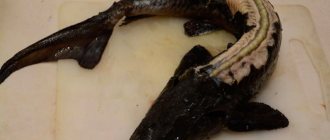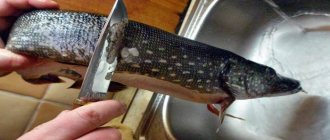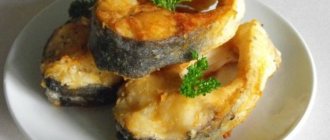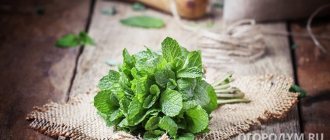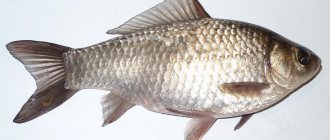Before eating sturgeon, it must be cleaned. This can be done when the carcass is frozen or fresh. Depending on the further use of the fish, certain cutting techniques must be used. From sturgeon you can prepare dozens of delicious and original dishes rich in microelements and vitamins. The main thing is that the fish is fresh, and the tools for work are convenient and of high quality.
Features of the view
Sturgeon has been known since the time of dinosaurs. The structure of its body is unlike any known fish. The skin of the sturgeon is covered on top and sides with ossified scutes “bugs”, and the rest of the skin looks like sandpaper. Along the ridge runs a long chord (viziga), which must be removed when cutting. Nutritious meat is rich in vitamins and protein; its consumption provides protection against atherosclerosis and has a positive effect on brain and heart activity.
An adult sturgeon fish reaches 6 meters in length and gains up to 100 kg, which is why sterlet is harvested on an industrial scale. This fish reaches 125 cm in length and 6 kg in weight. The sterlet has a long snout with a curved nose and brush-like whiskers. Sterlet meat is very tasty and fatty (up to 30%), while sturgeon meat is fibrous, elastic and denser.
In cooking
Tsar's ear
This fish, in any form, retains the amazing taste of its white meat. Sterlet fish soup is a favorite dish of Russian merchants. The famous Tsar's fish soup is prepared by first boiling small fish, then larger fish, and then sterlet. Sometimes caviar is also added to this fish soup.
Sterlet fillet can be baked, stewed, steamed, fried, or prepared aspic.
Cutting the sterlet begins from the back, from where you need to cut off the bugs - large scales. Then the scales are cleaned off from the sides and abdomen. The abdomen is cut, the gills and entrails are removed, and the elm is removed. At the end, the fish is thoroughly washed and dried (you can wipe with a towel).
Wine and champagne go harmoniously with the taste of sterlet. Wine can be added to the dish when stewing, and a glass of champagne will not hurt your ear.
When boiling and baking, the fish retains the greatest amount of nutrients.
Fish solyanka
Ingredients: 800 grams of sterlet; 250 grams of onions; 2 pickled cucumbers; 60 grams of capers; 150 grams of olives; 150 grams of tomato paste; 60 grams of butter; lemon; 2.5 liters of fish broth.
We fillet the fish with skin without cartilage and cut into pieces. Place chopped and sauteed onions, pickles, capers with brine, tomato paste, spices and pieces of fish into the boiling broth. Cook until done. Olives, a slice of lemon and finely chopped herbs are placed on a plate.
Jellied sterlet
Ingredients: one sterlet fish; 2 kg of small river fish; 2 eggs; 3 onions; 5 pieces of carrots; a handful of raisins; 1 tablespoon sugar; 5 bay leaves; greens and parsley root; black peppercorns; gelatin; salt.
After gutting the sterlet and removing the gills, wash it and place it in a wide saucepan. We clean and gut small fish, wash them and put them there. Add carrots, onions, peppers and parsley root. Fill with cold water and bring to a boil, removing the scale. After boiling, cook over low heat without covering the pan with a lid.
You need to cook the fish for two hours, adding half a glass of cold water a couple of times during cooking and skimming off any foam that forms. Half an hour before cooking, pour a handful of raisins into the pan. When the pan has cooled, take out the sterlet, cut it into portions and place it on a deep dish. Strain the broth and dissolve gelatin and salt in it.
As soon as the broth begins to harden, pour it into the dish with the sterlet and refrigerate for 45 minutes. After this time, beautifully arrange carrots, boiled eggs, and parsley on the frozen surface of the aspic. Place the aspic in the cold until it completely hardens.
Tips for choosing
Sturgeon is an expensive fish, the taste and benefits of which depend on the freshness and proper storage of raw materials. Chilled carcasses should have a pleasant fishy smell without foreign impurities. The gills are dark colored without plaque or mucus, the eyes are transparent. In steaks, the skin fits tightly to the meat, and when you press on the flesh, the pit immediately straightens out.
It is more difficult to choose frozen raw materials. The ice glaze should be thin, transparent, and free of blood and debris. There should be no “rusty” spots or smudges on the surface of the carcass or steaks. If you have the slightest doubt, you can ask the seller for quality certificates for the goods.
Cleaning process
Before cleaning the sturgeon, you need to put it in the freezer for 30 minutes. If the carcass is frozen, then let it thaw on the refrigerator shelf. Place the prepared fish in a large container and pour boiling water over it to wash away the mucus covering the body and soften the keratinized scale particles. Using a sharp knife, remove the bone plates “bugs” from the back of the fish, then from the sides in the direction from the tail to the head.
Next, the sturgeon is cut from its giblets. Place the carcass on its back on a cutting surface and rip open the belly from head to tail with a sharp knife. Remove the entrails and, if there is caviar, set it aside. During the process, it is important not to cut or crush the bile sac located in the intestines. If the bile ruptures, sprinkle the area with salt and scrape it thoroughly with a knife.
Important! Black sturgeon caviar is considered one of the most expensive delicacies in the world.
General characteristics and nutritional value of sturgeon
One of the largest representatives of the sturgeon family is a long-liver on earth - it is believed that sturgeons were found in the fresh waters of rivers and lakes long before the appearance of humans. This amazing fish can weigh up to 80 kg. As a raw material in cooking, this product stands out among others in that during the processing process the percentage of waste is only 14%, that is, almost all parts of the body are edible. The mass fraction of caviar is extremely high - up to 20% of the weight of an adult individual. Fish meat is full of useful substances:
- sodium;
- phosphorus;
- potassium;
- magnesium;
- iron;
- iodine;
- B vitamins;
- fatty amino acids.
Note . Systematic inclusion of sturgeon dishes in the diet reduces the risks of heart attacks and strokes, optimizes metabolism and helps normalize blood pressure.
Cutting the carcass into layers
How to clean carp
It is necessary to cut up a fish carcass according to plan. The step-by-step process is as follows.
Trim the fins with a sharp knife or fish scissors. Incisions should be made away from you to prevent injury. If you want a whole carcass, you need to cut out the gills, and when cooking in pieces, you should cut off the entire head.
Place the carcass on the board with its back up and divide it into 2 halves from the head. The dividing line should be strictly in the center of the fatty layer of the spinal cartilage. Cut each plate into the required number of portioned pieces.
With serrated sharpening
The item for cleaning perch and pike differs from a regular knife in that it has a serrated blade. The edge of the blade is sawtooth or wavy. All teeth are in the same plane. There are many modifications of this item. Due to the presence of teeth, any type of knife with serrated sharpening will greatly facilitate the removal of scales and entrails in the fresh air or in the apartment.
This product has a long cut due to the edge passing along a curved line. This knife is much easier to work with. It is possible to properly clean the fish, both from scales and entrails, and cut at different angles. It's easy to use a knife; there's no need to put any effort into it. The sharpening stays sharp for a long time. You can use a cutting tool even if the blade is dull.
Negative aspects include clogging of the teeth with scales and pieces of meat. Also, a completely dull blade can only be sharpened by a professional with special equipment. You will need several bars of different composition and size.
Yandex pictures
Frozen carcass cutting
Cut off the head, removing the gills. You can make rich fish soup from fish heads, fins and tails, so there is no need to throw them away. Holding the carcass by the tail, rest it where the head is cut on the board. Cut off the top spines with a small strip of skin, cut the skin near the tail and remove it in strips from top to bottom throughout the entire fish. Cut the belly lengthwise, remove the entrails and wash the sturgeon. Make a cut either at the tail or along the ridge and pull out the squeal.
Important! Removing the sturgeon is mandatory, as toxic substances accumulate in it if the sturgeon lies for a long time after being caught.
Sturgeon dishes
The methods for preparing sturgeon are no different from preparing other types of fish. It can be baked in the oven, boiled fish soup or barbecued, fried in a frying pan or grill, steamed or used as a filling for baked goods. And what kind of cutlets and lula-kebabs it makes! Given the bright taste, fat content and the absence of small bones, the fish becomes ideal for any dish.
Stuffed sturgeon has always been one of the most delicious and beautiful dishes on the holiday table. To do this, the whole carcass (with head and tail) must be cut up as indicated above, the insides must be pulled out, making an incision from the anal fin towards the head. Any filling can be placed into the resulting niche, for example, potatoes, carrots and herbs (the filling must be ready). The cut should be sewn up with thread, the top of the sturgeon carcass should be salted, peppered, coated with spices or mayonnaise and baked in the oven for 30 minutes in foil. Then the foil should be removed and baked without it to obtain a golden brown crust.
No matter how you prepare sturgeon, the dish will definitely delight you and your loved ones with its unsurpassed taste.
Preparing fish for stuffing
You need to clean the sturgeon for stuffing so as not to damage the integrity of the skin. To do this, dip the carcass in boiling water for 3-5 minutes, while the skin will begin to tighten and lighten. Press down each “bug” stud, turn it around its axis and remove it. Cut the skin around the head in a circle and pull it off with a “stocking”, helping yourself with a knife in problem areas. Stop near the caudal fin, make an incision in the cartilage and pull out the squeal. Cut the ridge with a knife so that the fin remains with the skin.
When cooked, the squeak left in the carcass is strongly compressed, causing the carcass to shrink and lose its appearance.
Sturgeon spawning
With the exception of certain species, sexual maturation in sturgeon occurs quite late: males are ready to breed at the age of 5 to 18 years, females mature at the age of 8 to 21 years. The time of maturation depends on the habitat: the further north the fish live, the later they are ready for reproduction. Reproduction does not occur every year. Spawning of female sturgeon occurs once every 3-5 years, males spawn more often. After reproduction (spawning), the sturgeon does not die, unlike some other fish species.
The spawning migration of anadromous and semi-anadromous sturgeon species is significantly extended in time and lasts from early spring to November, and its peak occurs in mid-summer. Early migrating sturgeon (spring species) spawn in the same year, winter forms of sturgeon overwinter in rivers and spawn the following spring.
For spawning, sturgeon choose rivers with strong currents (up to 1-1.5 m/sec) and a rocky or pebble bottom, less often sandy. Reproduction is not observed in salty or stagnant water. Spawning occurs at a depth of 4 to 25 m at a water temperature of + 15 to +20 degrees, depending on the habitat. An increase in temperature negatively affects the development of embryos, significantly reducing the number of hatched larvae, and at water temperatures above 22 degrees, sturgeon caviar dies.
Spawning occurs in bottom crevices or cracks of large stones, sometimes in well-turfed areas of the banks, flooded by spring floods. Sturgeon is one of the most prolific fish: large females are capable of laying up to several million eggs, accounting for about 25% of their body weight. The largest caviar is that of the Pacific (green) sturgeon, reaching a diameter of 4.5 mm, and the average diameter of the eggs is 2-3 mm. Moreover, 1 g of sturgeon caviar contains about 100 eggs.
Sturgeon caviar is sticky and adheres well to the substrate where it was deposited. At a water temperature of about +20 degrees, embryonic development lasts approximately 2-4 days. The incubation period can last up to 10 days. The weight of hatched larvae is about 10 g with a length of 0.8-1.1 cm.
Newborn sturgeons have poor vision and poor swimmers, so at first they hide in shelters under stones.
Photo by: Martin Chytry
The large yolk sac that surrounds the sturgeon larva and serves as food for it completely dissolves in 10-14 days. During this time, the fry grow to 1.6-2 cm and begin active feeding: they usually eat planktonic crustaceans (daphnia, cyclops), and then switch to mysids, gammarids, oligochids and chironomid larvae. Now the sturgeon fry acquire the features of adults and swim quite well. Juveniles of migratory sturgeon species swim to the pre-estuary space of the river, where they live for some time. The fry of some species (thorn, Russian sturgeon) linger in fresh river water, where they live for a year and sometimes a little longer. Thus, the first year of life of sturgeon fry is spent in fresh water or at the border of fresh and salt water, since concentrated salt water of the seas is destructive for young sturgeons.
Helpful cleaning tips
The process of cleaning gourmet fish has a number of nuances:
- To prevent the carcass from slipping out of your hands when cutting fish at home, you need to wear gloves. After scalding, the skin is cleaned with a potato brush in the direction away from you.
- To clean off the mucus, you can pour boiling water over the carcass or rub the fish carcass with salt. When cleaning, it is better to cover the working surface with several layers of newspaper and change them as they become dirty.
- To avoid damaging the bile sac, you need to know where it is. The location of the bladder is immediately after the pectoral fins, closer to the liver. It is precisely because of its close location that you should not drive the knife deep.
- Do not eat questionable sturgeon, as the intestines may contain botulism pathogens. Microbes quickly penetrate into the thickness of the meat and caviar.
For grilling kebabs
- How often and how is it planned to clean the fish so that waste does not fly away;
- What type of fish products will need to be processed more often;
- How many carcasses will need to be cleaned;
- Terms of use of the purchased tool.
First you need to remove the skin from the carcass. The skin comes off best after scalding. Cut off the head of the fish, make a small cut in the skin and separate the skin from the meat. You can do this with your hands or special forceps. If the skin does not come off very well, you can help yourself with a knife by trimming the fibers of the meat attached to the skin. After skinning, use a sharp blade to cut a layer of fillet from the spine from one part of the carcass. Remove the backbone from the second half.
